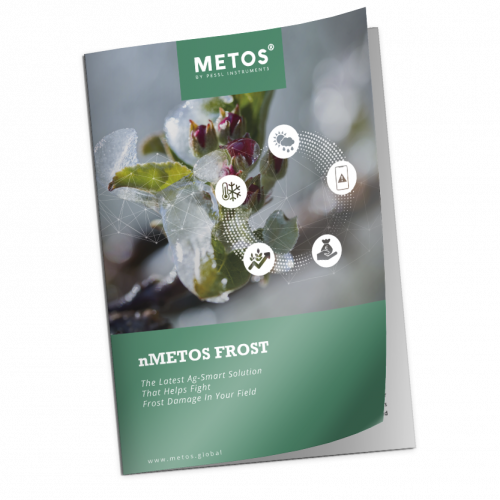Late-season frost with prolonged periods below-average temperatures: use METOS® devices to be alerted via SMS, email and smartphone notifications.
Frost wave over all Europe
After a warm start of April, with record-breaking heat waves across Europe, a dramatic temperature change occurred. Following more than ten days of summer-like weather, with highs above +30°C, temperatures shifted to below-average levels.
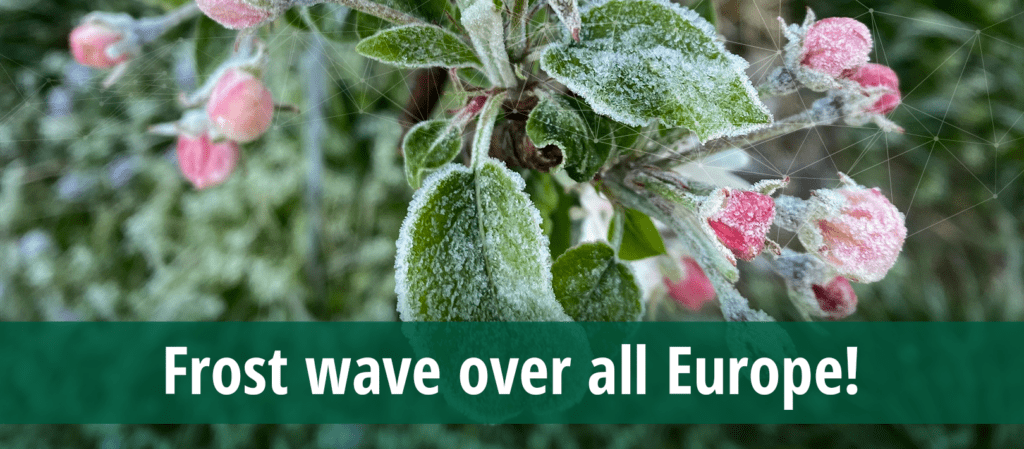
What is exceptional is not so much the cold temperatures, but rather the combination with the advanced phenological stage caused by anomalous heat waves.
In recent years, marked by particularly warm winter months, fruit crops have experienced an early vegetative awakening and are now extremely vulnerable to low temperatures at phenological stages that are particularly sensitive to cold.
Protecting the crop at the right time, therefore, is crucial. It is of key importance to monitor the correct temperature in your field crop and at the appropriate height.
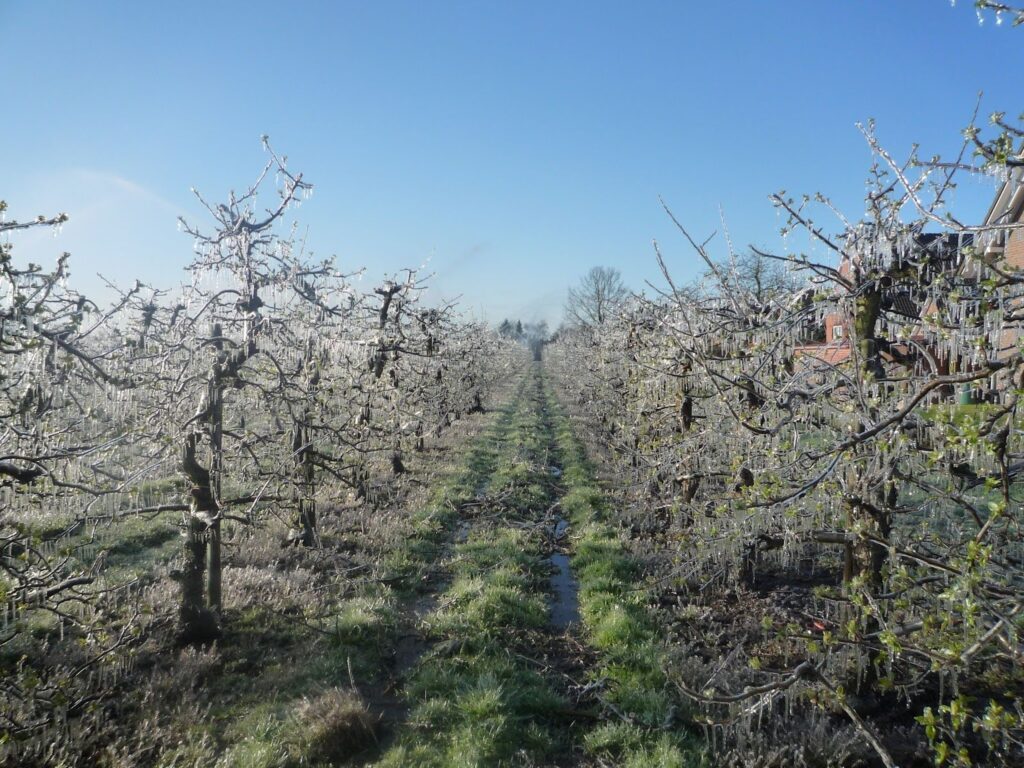
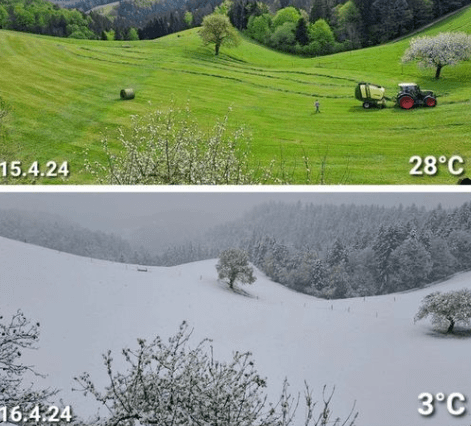
WHAT HAPPENED?
A strong high-pressure system building over the North Atlantic and Arctic region disrupted the usual spring circulation.
This allowed a deep trough to form on the eastern side, dipping south and bringing cold Arctic mass air toward central Europe, developing prolonged advective frost nights.
This resulted in heavy precipitation and even snow close to the lowlands, accompanied by rapid temperature drops and strong winds. Following the cold front, much colder weather overspread most of the continent.
Compared to recent days, this has been a fundamental change: we have been in an excessively hot airmass lately.
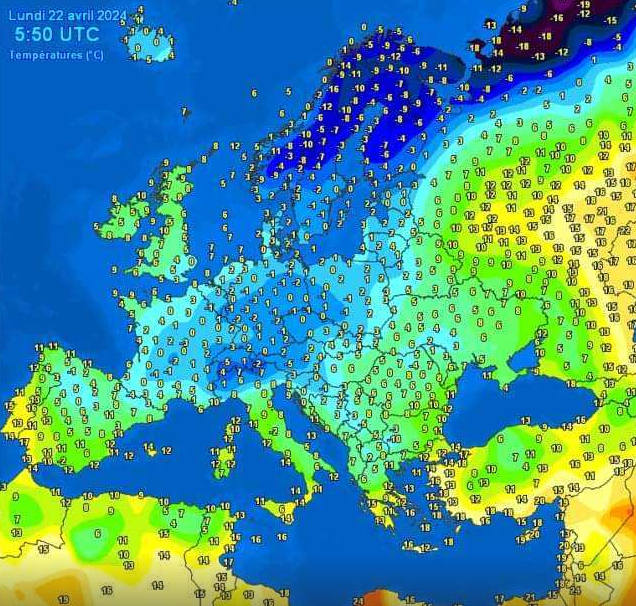
USE CASE IN STYRIA (AUSTRIA)
Near Pessl Instruments HQ, there is a very important area where farmers grow high-quality apples. Over the past decades, many METOS® stations were installed, creating a dense network for frost monitoring.
These stations monitor temperatures in real-time, allowing farmers to know the precise moment their crops are at risk via timely alerts, which they receive through SMS, email, and smartphone notifications.
Late-season frost is a significant problem here, and in recent years more attention has been focused on protecting the yield while using less resources at the same time.
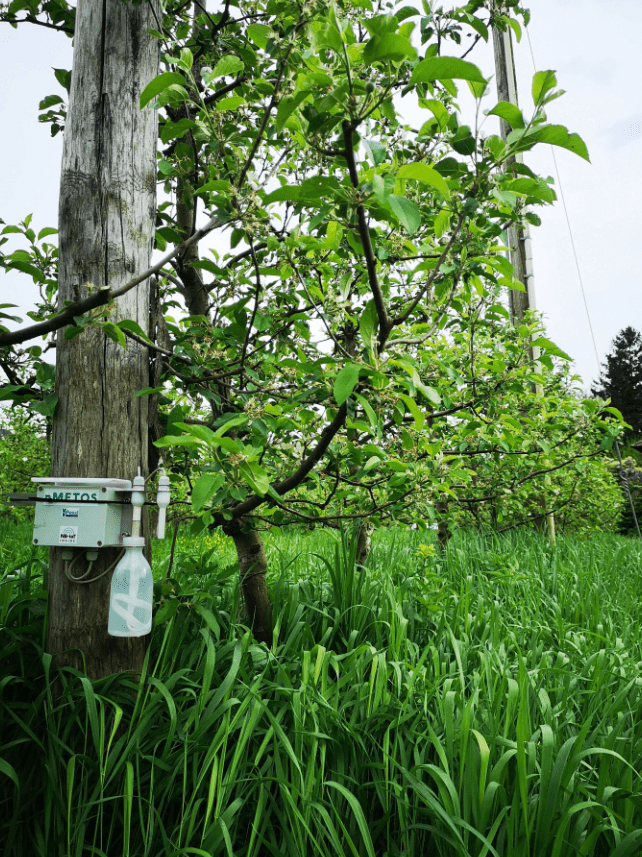
One highly efficient method is using a sprinkler system to protect apple plants from frost. To determine when to turn the system on and off, farmers use a Wet & Dry bulb temperature sensor. This sensor monitors frost conditions in real time. Combined with a very precise forecast (calibrated at the station), alerts the farmers of impending frost.
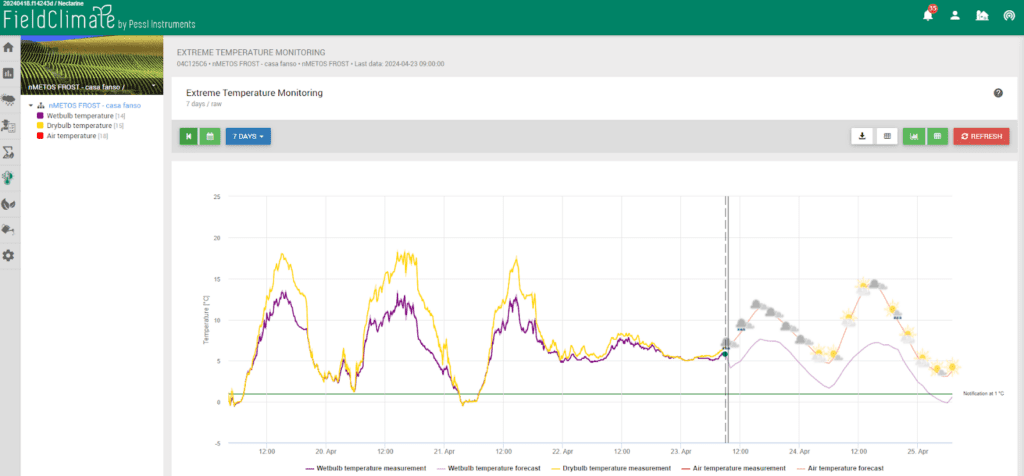
Sprinklers should be started before wet temperature drops below 0°C – depending on the crop’s different phenological phases and critical damage temperature. The Wet bulb thermometer (kept moistened with water) better represents the temperature within plant tissues during frost conditions, while the Dry bulb temperature sensor (unshielded) follows more accurately the plant temperature during clear nights.

However, in many regions worldwide, limited water availability restricts the use of sprinklers. There are also other active methods used to mitigate the effects of subzero temperatures.
The cost of each method varies depending on local availability and prices. Heaters are used to combat the increasingly frequent advection frosts that occur when a sudden cold air mass arrives, as in this case. Wind machines (or fans) blow air almost horizontally to mix warmer air from aloft during a temperature inversion with cooler air near the surface, and are used in cases of radiative cooling. Nowadays, combinations such as sprinkler-fans or heater-fans are also used to protect crops from both radiation and advection frosts.
While the frost may still linger over us, the next threat is already getting ready.
Take action NOW.
Want to know more?
Download the nMETOS FROST brochure.
